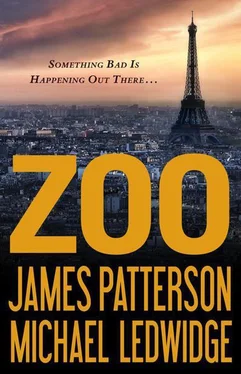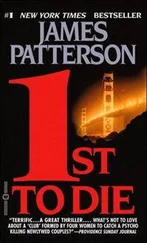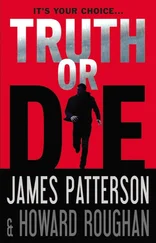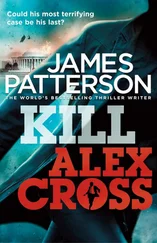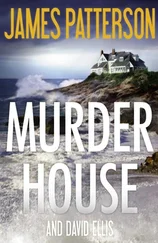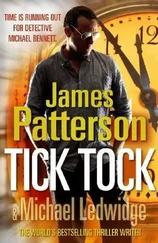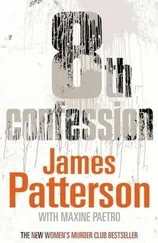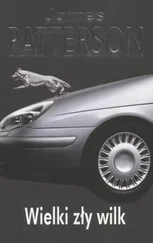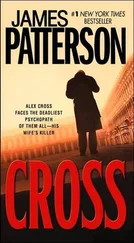It was a human body. Most of one, anyway. It was a decomposing—and what looked like a partially eaten—human body. I couldn’t identify it by the face, because the face was gone. As were the feet and hands. But there was long red hair. Red, red, Irish girl’s hair, and the body was wearing turquoise hospital scrubs.
A rectangular plastic card was clipped to the breast pocket of the blood-stiffened shirt.
I unclipped it and looked at it. Under dirt-brown streaks of dried blood, there was Natalie’s deer-in-the-headlights mug shot on her hospital ID badge.
NATALIE MARIE SHAW, it said beneath the picture.
I hardly noticed Chloe as I brushed past her in the hallway. I’d made it to the front door when Chloe grabbed my arm.
“What is it? Tell me, Oz. Please. What’s in there?”
I babbled. “My—uh, my girlfriend…”
She balked, scrunched her face up. Her face showed confusion, with the possibility of anger in it.
“I thought she was your ex-girlfriend.”
“She is now.”
We called the police from Mrs. Mullen’s apartment. Mrs. Mullen, my next-door neighbor—a sweet little Irish lady who was so old she’d probably come over in the potato famine. I wasn’t terribly shocked when Mrs. Mullen said she hadn’t heard anything in the last week. The lady was deaf as a stone. She didn’t even know I lived with a chimp.
The first cops to arrive were already aware of Attila. They told me he had been spotted on the street but that he was still on the loose. Something about hiding on the roof of a bodega.
What now? What did I do with my life?
My home was destroyed. If I hadn’t zipped off to Africa and asked Natalie to take care of Attila, she would still be alive. My fault. If I didn’t have a fucking chimp in my apartment she would still be alive. Also my fault. She was a saint—even after breaking up with me, she’d still come over to check on Attila. And he had killed her. I went further and further back down the chain of decisions I’d made, thinking about what I could have done differently. A lot. Regret sucked at my heart like a leech.
Chloe sat beside me and held my hand as I sat in the stairwell while police radios squawked and crackled in my apartment and all down the hallway neighbors had come out to stare.
What now? What indeed.
And the nightmare wasn’t over. Not even close.
Book Four
THE NATIVES ARE RESTLESS
FIVE YEARS LATER
WHEN I FELT the train slow, my eyes fluttered, bringing me out of an impromptu nap.
Outside the window of the Acela, I could see we weren’t in D.C. yet. We were going through a seemingly abandoned industrial town in South Jersey, or maybe northern Maryland. These decaying towns all looked depressingly the same: windowless brick factories; deserted, rusting bridges; a main street lined with plywood-boarded windows and overgrown with weeds. Going back to nature, slowly.
Turns out an apocalypse actually comes on pretty slowly. Not fire and brimstone but rust and dandelions. Not a bang but a whimper.
Perhaps it was due to the continuing economic downturn, but rumors abounded on the Internet. People were dying in these in-between places. No one knew why.
I had my theories.
Gazing out at the orphaned town, I thought of those lines from Yeats:
Things fall apart; the centre cannot hold;
Mere anarchy is loosed upon the world…
For a moment I stared blankly at my reflection in the black screen of the sleeping laptop that was open on the tray table in front of me. You could have packed for a long weekend in the bags under my eyes.
So much to do and so little goddamn time to do it.
For the last five years, I’d been working nonstop with my friends at Columbia to try to get a handle on HAC. A lot of the work consisted of collecting the corpses of affected animals and performing autopsies on them.
We’d seen a lot of specimens. Too many. Tigers from India. Russian bears. Beavers, wolverines, even ground squirrels. The unusually aggressive behavior had spread to so many mammal species we were starting to lose count.
It wasn’t rabies. As far as we could tell from the specimens we’d studied, it didn’t seem like a virus. We had noticed something interesting, though. The brains of the affected animals were a little heavier than normal. Not only that, but they were heavier by the same amount, about 1.3 percent. The increase in brain matter seemed to be concentrated mostly in the amygdala, the part of the mammalian brain generally thought to be responsible for memory and learning.
The finding was unusual enough to finally get the government on board. For the last year, we’d gotten decent funding and had been working with a liaison from the Department of Health and Human Services.
So the good news now was that we had provided the world with proof that something was causing abnormal mutations in mammalian amygdalae that were triggering this aberrantly aggressive behavior. The bad news was that we didn’t have a clue what it was.
There were other questions. Why were some animals affected and not others? And why were humans entirely unaffected by these mutations? Were there other symptoms associated with the mutations? Yes, and they varied from one species to another. In some species—lions, for instance—the mutations seemed to affect only male animals. Not so in other species. There had been an ugly episode of bizarrely psychotic behavior among a group of female elephants in Thailand. Every hunch we got about every question opened up a fresh jar of questions. Questions that had been answered sprouted more questions, like the heads of the Hydra: cut off one and two grow back in its place.
I stared out at the wasteland that America was becoming, rusting under the hard, pitiless summer sky.
AND THERE WAS more bad news that morning—special, just for me. I had to interrupt my research in order to head down to D.C. to do my Chicken Little dance at another time-suck of a congressional hearing. For all the scientific evidence we were amassing—and in spite of the exponential increases in animal attacks, which were irrefutable—many people, both in the government and in the citizenry our elected officials are supposedly beholden to, were still refusing to accept that anything out of the ordinary was happening.
I wasn’t the only voice screaming in the wilderness anymore—but still, not everyone had heard the call. In those first few years, it was a long, uphill battle to get people to recognize what was happening. I had frequently been at loggerheads in the op-ed pages with Harvey Saltonstall—yes, the Harvey Saltonstall: evolutionary biologist, popular science writer, holder of the Henry Wentworth Wallace chair at Harvard. I had a couple of public debates with him, too. Harvey and I had shared a few split screens on news shows. He was my most prominent public critic, and his opposition to HAC must have delayed public acceptance of it by years. It drove me nuts debating him—he had the academic cred, the name, the CV, and who the hell was I? I looked like your office’s IT guy standing next to that stately, handsome man, twiggy in his tweeds, with his pipe-smoky baritone, his Boston Brahmin accent, and that obnoxious tic of swiping back his silver hair. Twit.
I rubbed circles on my throbbing temples with my thumbs, my gathering headache coming at me in fuzzy radio waves of pain, and was more astonished than alarmed when a guy I didn’t know came in and sat down across from me. He looked like an ex-husband of Britney Spears: skinny arms blue with bad tats, houndstooth Sinatra hat, a goatee that looked drawn on.
A small part of me wondered if I was still asleep.
Читать дальше
